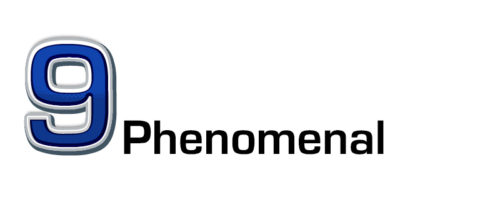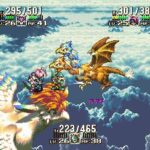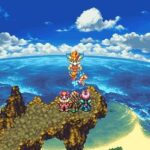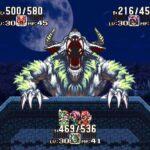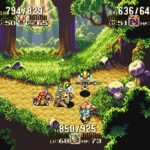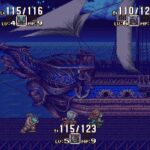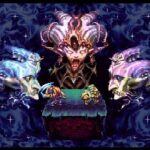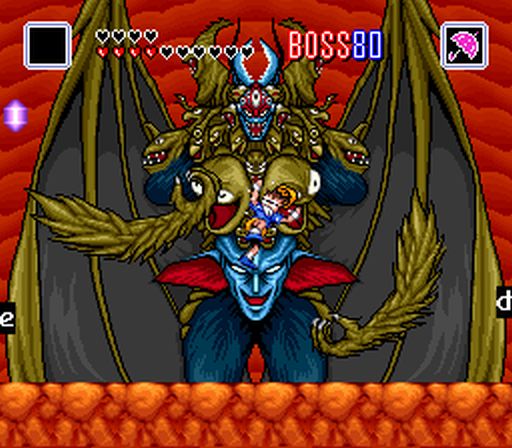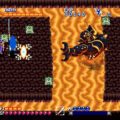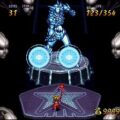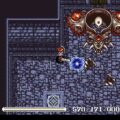Developer: Square Publisher: Square Release: 09/30/95 Genre: Action RPG
Of the many Square RPGs that never came to the US during the 16-bit era Seiken Densetsu 3 probably stings the most. Secret of Mana was much beloved by fans worldwide and with good reason as it was fantastic. One would assume its far superior sequel would naturally come to the West. But sadly it did not happen. By every metric this is a far superior game to its predecessor in almost every category. For years the fan translators was the only option fornon-Japanese speakers. But the game has since been officially re-released in spectacular fashion on modern platforms. Despite that the original still remains a worthwhile endeavor.
Long ago the Mana Goddess forged the Sword of Mana and used it to seal eight God Beasts within the Mana Stones, preventing the world from being destroyed. Since that time mana has started to fade from the world and numerous forces conspire to unleash the God Beasts on the world for their own ends. Six heroes from different kingdoms, all for reasons of their own, will eventually team up to stop this threat.
It was a sad day when Seiken Densetsu 3 was passed over for localization. Although many sources from that time within Square have said otherwise it is kind of hard to believe the game was not passed up in favor of pushing Secret of Evermore. Not to take anything away from Evermore but it simply is nt as good as this lost classic. For years gamers hoped and prayed SM3 would be ported but it never happened. But in 2000 that became irrelevant as Neo Demiforce completed their fan translation of the game. As one of the first major fan translations the work done here is thoroughly professional and allowed thousands to finally decide for themselves if the game really is that good. Yes, yes it is.
From the onset Seiken Densetsu 3 is both familiar yet different. You select your three member party from a pool of six with your chosen hero determining which side of the world you begin. Your first choice is the protagonist with the other two serving as backup once you eventually meet. Sadly there is only 2-player coop this time rather than 3. There aren’t separate quest lines for each character; everyone follows the same basic story with a few locations and bosses exclusive. While it would have been cool it is also unrealistic to expect from a 32-meg cartridge game.
Each character differs wildly from their stat focus to their attacks. Duran is extremely strong but suffers a brief delay after every attack that is really annoying. Hawk is an agile thief who can hit twice with one attack but suffers from low defense and hit points. Angela possesses the most powerful arsenal of spells in the game but is not a physical powerhouse. When choosing your trio it works best to complement your hero’s weaknesses although it is fun to experiment. On my second run I chose Duran, Hawk, and Kevin. This group was low on magic throughput (at least initially) but were such strong melee bruisers that most bosses would only get off a few spells before death.
The party system receives more depth through the class change system. At select levels (18 & 38) you can choose to go down the path of light or dark at each point for a total of four different end classes per character. In terms of abilities they are wildly different. As a Lord Duran only has two spells, healing light and twinkle rain. As a Gladiator and Swordmaster he gains numerous spells to imbue his weapons with elemental attributes. Character class also affects maximum stat growth when you level. Unfortunately there is no in game explanation of these nuances. In the early days of the internet FAQs explaining every potential class did not exist or were bad. Luckily all the information you need to make an informed decision is available now to get the most of the class change system.
In terms of combat there have been a ton of mechanical changes, most of them for the better. The annoying charge system of the first game has been replaced by a more effective solution. You build up charges with every hit and unleash special attacks at the appropriate level. This means there are less tech skills overall but combat is considerably faster as a result. The game pares back a significant number of its systems to complement this. You no longer level up weapons through consistent use and instead buy upgrades from traditional vendors. Thank the gods for this as juggling weapons between characters to make sure each one could use them effectively was one of the least enjoyable parts of that game.
Another addition is a day/night cycle as well as days of the week, both of which have a substantial impact on combat. Certain enemies will transform at different times during the day and will sometimes be asleep at night. One hero, Kevin, transforms in to his beast form at night with increased attack power. Also certain shops are only open during the day or night. Each day of the week corresponds to a spirit with their element receiving a bonus on that day which could be a benefit for certain boss battles. Conversely it also applies to enemies as well. This adds a layer of strategy as to how and when you tackle certain areas that I like.
This is a pretty long game and it becomes completely nonlinear during its second half. There is also a sharp spike in difficulty at the halfway point. The various systems I outlined previously help but the game still puts up a fight. Your party makeup can ease some of this but this is not a game to be under leveled in. Unfortunately this means you will have to grind frequently which slows the game’s pace considerably. I won’t lie, eventually I cheated my way through the last 20% as I have little patience for grinding anymore. Your mileage will vary of course.
To say that Seiken Densetsu 3 is a beautiful game is an understatement. This is easily one of the top 5 best looking SNES games, let alone of that generation. The artwork in the game is jaw dropping at every turn with both objects and background elements casting transparent shadows. More importantly however this is a world that is truly alive as grass and foliage blow in the wind, streams and waterfalls flow, and the heat haze from lava is visible. The sprites are larger than normal with tons of small animations you might miss if you are not paying attention. The bosses, especially the God beasts, are just…….wow. That is all I can say. That the game can still have this kind of impact on me even after all these years speaks volumes.
The soundtrack by Hiroki Kikuta is similarly excellent though not to the same level as its predecessor. The overall score has less variety in its tracks and leans more toward ambient and energetic. While less daring in its use of instruments the soundtrack still frequently manages to hit the same highs as Secret of Mana, just not as frequently. The sound quality is also better with none of the typical muffled samples found in a lot of SNES games.
In Closing
There have been plenty of Mana games since Seiken Densetsu 3’s release. Sadly none of them has even been close to the quality of this title. Seiken Densetsu 3/Trials of Mana is an action RPG fan’s dream and one you need to experience in any capacity. Now you have various options to play this game; the official release in the Collection of Mana or the excellent Trials of Mana remake. No matter how you do so play this game.
